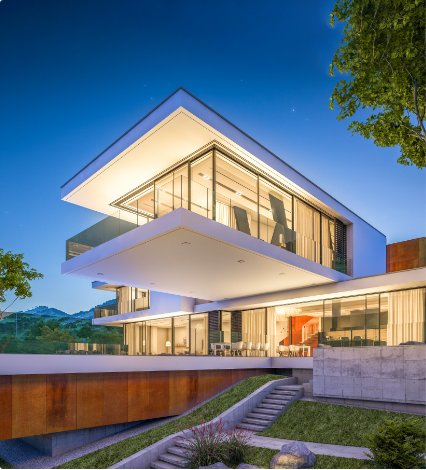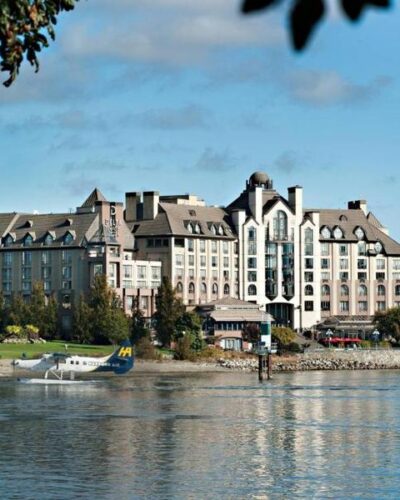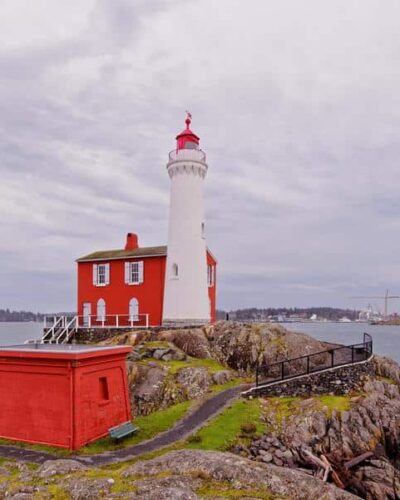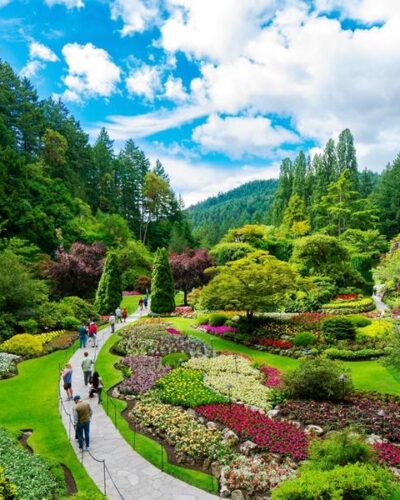Located north of Vancouver in Canada’s British Columbia, Whistler Blackcomb takes the title of the largest ski resort in North America. With thousands of acres of terrain and hundreds of trails, Whistler is the ideal location for a winter ski or snowboard trip. Whether you’re an avid skier, or just looking to get into the sport, there’s something for you at Whistler.
Here’s everything you need to know about skiing in Whistler to plan your perfect winter getaway.
An Introduction to Whistler
Whistler spans roughly 8,100 acres and rises over 5,000 feet of elevation from base to summit, making it easily one of the best ski resorts in the northwest hemisphere. They receive on average over 11 meters (about 37 feet) of snowfall at the summit each year covering the 200+ trails of beginner through advanced terrain.
Although commonly referred to simply “Whistler,” the resort actually spans two mountains, Whistler and Blackcomb. Each has over 100 trails and beginner-friendly ski runs. Roughly 20% of the terrain on both mountains is considered to be beginner, while around 50% is intermediate. This makes the mountain approachable to any skier/rider regardless of skill level.
If you’re a real thrill seeker, they’ve got you covered. With five terrain parks and one superpipe, there’s enough terrain to keep you riding all day.
Both Whistler and Blackcomb mountains have a seven-mile top to bottom beginner trail! This means you’ll practically never run out of new terrain and you can slide down the slopes to your heart’s content.
Best Time of the Year to Ski in Whistler
There are many things to consider when deciding when to plan your Whistler ski trip. With the long winter season starting in November, and at times running into May, there’s a big difference in ski season conditions from month to month that could make you want to rethink your travel dates.
Regardless of what the weather generally looks like month to month, it’s best that you check the snow report right before your trip to get the best glimpse at the conditions.
November
Kicking off the season with a bang, November can provide a few large dumps of snow throughout the month at Whistler, and since it’s the start of the season, crowds are at a low, and tickets are slightly cheaper. Don’t go grabbing your poles quite yet however, big mountains like these take a while to get a solid base of snow. So even though you might get lucky and score a powder day, you may end up with poor coverage of terrain and limited trails to ride.
December
December is a popular time to ski Whistler for many reasons. The winter season is picking up, snow is falling, and there are plenty of holiday festivities in the village.
Whistler Village has everything from snowshoeing to sleigh rides, or if the weather is too cold, a perfect cup of hot chocolate by the fireplaces. This can be a fun time for those who aren’t even interested in skiing to visit as well since there are so many bonus activities to enjoy.
Although the village is wonderful this time of year, crowds and lift tickets are at an all-season high. The lines for chairlifts are generally long, and if you want to make a reservation at one of the many fine dining restaurants, it’s best to do it a few weeks in advance.
January
Now this is winter! Just after the holidays when the crowds start to die down, Whistler Blackcomb comes into full force. At this point in the season it has snowed enough to form a solid base, and terrain should be completely open on both mountains.
January is full of both powder and bluebird days. So whether you want to ski the pow or take in the wonderful views, January could be the ideal time for you to ski or snowboard this world-class mountain.
February
February is the infamous powder month for this Canadian ski mountain. Although the average total snowfall in February is less than January, this is typically a good time to score powder since average temperatures are low, and crowds are small. This is a good time to ensure a wide variety of terrain will be open, and that the weather will be nice.
On top of that, prices are generally lower in February than in January and December, giving you the most affordable mountain trip possible.
March
March is the hidden gem of Whistler skiing. All the crowds have gone away, snow is falling and the prices are down.
March, locally called “March Madness” is many people’s favorite time to be on the mountain. There is lots of snowfall and good coverage, and the temperatures are still low enough to ensure good snow.
If it lines up with your schedule, March is a great time to visit Whistler Blackcomb if you want to score without getting stuck in lines. Be sure to check the forecast however, sometimes temps are warmer lending towards more of a spring skiing experience.
Pro Tip: This is a great time to visit Whistler with a family given the warmer temps and reliable conditions. If you have kids in school, that might mean a Spring Break trip to Whistler!
April/May
Towards the end of the season at Whistler, temps start to rise and snowpack begins to decrease. This doesn’t mean that it’s not a good time to go. April still boasts the occasional powder day, and that mixed with gorgeous spring weather could be the perfect combination for a dream trip. Rates are as low as they get in April, and crowds are minimal as well.
Although this is typically the end of the season for Whistler, in April 2022 the mountain received more snowfall than February and January combined! Plenty of powder days through April and the snow kept flying into May, really showing how unpredictable the winter season can be.
How to pack for a winter ski trip to Whistler
Preparing and packing for a ski trip can be a bit overwhelming at times, so here is a list of some things you definitely don’t want to forget on this year’s ski trip.
Thermal layers
If you don’t have them, you need them! Your base layer is the most important piece of your clothing when it comes to keeping you warm on the slopes. Costco has some very affordable options with decent quality, and is a good option for first-timers or anyone looking to not break the bank. You want to avoid anything made of cotton.
Warm flannel or hoodie
Although you’ll probably spend most of your time on the slopes, you’ll want a comfortable layer to wear at the end of the day that will keep you warm while getting from place to place in the village.
Waterproof/resistant winter boots for town
This one is important. You’ll be walking around in snow and slush while getting from place to place in the village. You’ll want to have some winterized shoes or boots to avoid getting your feet wet.
Winter jacket
Although jackets will be available for rent (along with almost everything on this list) it’s always a safe bet to bring your own. If you’ll be using a jacket more than a couple of times each year, it’s worth investing in something that will keep you warm.
Winter hat
Remember to keep your head warm when you’re out and about in the village or off exploring. Poor insulation on your head is the quickest way to end up chilled. Luckily winter hats and beanies are affordable and almost all of them will keep you warm.
Warm wool socks
Often overlooked by ski vacationers, wool socks can easily make or break your day on the mountain. Wool will keep your feet dry and well insulated all day, and can go much longer than normal socks before needing a wash. A couple pairs of these are a necessity when it comes to skiing and snowboarding.
Gloves
Even if you don’t have ski gloves, it’s a good idea to bring something to keep your hands warm when you’re off the slopes.
GoPro
This will most likely be a trip you want to remember. Phones work great in warmer temperatures, but tend to shut off when it’s too cold. While you’re on the mountain, having a GoPro will give you the opportunity to record moments that you normally wouldn’t have the chance to.
Chapstick and lotion
Chapped lips and dry faces are very common while skiing or riding. Make sure to have something to moisturize to avoid discomfort.
Bathing suit
Pool and hot tub season in Whistler is year-round. Make sure to bring your bathing suit to enjoy the heated pools and incredible views.
Flip flops
It’s always a good idea to bring some waterproof sandals or flip-flops on vacation. You’ll want something to wear getting to and from the hot tub, or even the shower.
Goggles
Goggles are available for rent, but it’s also nice to have your own. If you’ll use them again it may be worth it to get something that works best for you. Having the option between a lowlight and daylight lens is ideal when dealing with mountain weather, as it can change without much notice.
Sunglasses
The sun gets reflected off of the snow in the winter, making it very bright during the day. Make sure to bring sunglasses to block out the glare when you’re at the base.
Backpack
You never know when you’ll need a backpack. Something small to take with you during the day to store extra layers, snacks and water is a great idea for Whistler.
Helmet
Invest in your head! Rental shops will provide you with a helmet if you need one, and it’s always better to play it safe when it comes to your head. You’ll find that most ski brands have an affordable option for those who want good protection without breaking the bank.
Skis/Snowboard + Boots
If you don’t have your own, don’t sweat! There are tons of good rental options in Whistler and plenty of knowledgeable shops to get you set up with everything you need.
Speaking of…
Rentals
Here’s what you can expect to pay for rental skis and poles (or a snowboard), boots, and a helmet during the regular season at Whistler:
- 1 day ~ $55
- 2 – 3 days ~ $110
- 3 – 5 days ~ $165
- 4 – 6 days ~ $220
- 5 – 8 days ~ $275
- 6 – 9 days ~ $310
Keep in mind, prices will vary depending on rental location.
If this is your first time skiing or snowboarding or you need a refresher, you can also sign up for a ski school. You can either sort your ski school out through your rental company or get your rentals through your ski school. If they don’t have any rentals directly, they’d be able to recommend a reputable company.
Guide to Whistler Ski Terrain
Whistler has terrain for everyone, regardless of skill level. Between the two mountains, just over 50% of the terrain is at an intermediate skiing level, and 20% is at a beginner level. This leaves roughly 30% of advanced terrain, plenty to keep even the most skilled skiers and riders on the mountain all day.
There are also some areas that are suitable for backcountry skiing but to really enjoy these ski areas, it’s recommended that you’re an advanced skier with plenty of experience to get you through this more unpredictable terrain.
Beginner Terrain
Beginners can ski all over the Whistler Blackcomb resort. With every lift having easy access to a green trail (except for the Peak and Creekside lifts), feel free to explore the mountain looking for green trails. Check out Upper Whiskey Jack and cruise down the Pony Trail on Whistler mountain. On Blackcomb, checkout skiers’ left of the mountain for access to a handful of green trails like Last Resort Road, and Sunset Boulevard. Always consult the trail map before you take a lift to avoid any sticky situations!
For absolute beginners, there are a couple of marked beginner areas on the resort. These are great places to go and practice your skills as you get comfortable on the snow.
Intermediate Terrain
With over 50% of the resort within your grasp, being an intermediate skier/rider at Whistler is a whole lot of fun. A popular trail, Peak to Creek is a 3.3-mile intermediate run. You’ll be able to see everything there is to see on Whistler mountain and ski until your legs give out. Be sure to check out Symphony Bowl and Harmony Ridge as well.
On Blackcomb mountain take the 7th Heaven lift to access multiple intermediate trails like Hughs Heaven and Crystal Traverse.
Advanced Terrain
If you’re an advanced skier or snowboarder, you’ll have no shortage of fun at Whistler Blackcomb. Whistler is home to some of the advanced skiable terrain in North America. On Whistler Mountain, take the Peak Express to access some serious terrain. Check out Whistler Bowl and head down to Doom and Gloom. There’s no shortage of steep chutes and open bowls to check out at the peak.
Skiers’ right of Blackcomb mountain is riddled with advanced terrain. Take the Glacier Express to access enough black trails to keep you busy all day. Jersey Cream Bowl is a must, along with taking the Secret Bowl down into Pakalolo. For some great hiking check out Blackcomb Glacier and Spanky’s Ladder. Long lines are common on a nice day at Spanky’s, so be prepared.
Enjoy Whistler!
Whistler Blackcomb is a wonderfully impressive resort with something for everyone. Young or old, beginner or expert, you’re sure to have an amazing time while on your winter ski vacation at one of the best ski destinations in the world.
Featured Image Credit: Juana Nunez













